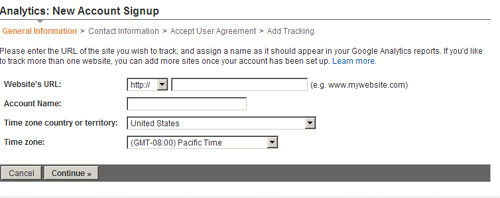How to Get Started with Testing and Tracking
Testing and tracking are two skills any online marketer or business owner needs to learn if they want to succeed.
What Tracking is and Why It’s Important
Tracking can be put simply as “understanding how your visitors behave.”
By properly tracking your user behavior, you can learn a lot about how people interact with your site. You’ll learn things like …
- How many people come to your website
- Which pages people read carefully and which pages they just leave
- Where people come to your website from
- How many of them buy, how many of them click through
- Which of your newsletter sign-up boxes actually work
- Etc.
If you want to build a great website that generates real money, understanding how your customers behave is crucial. That’s what tracking allows you to do.
What Should You Be Tracking?
There are a lot of things you should be tracking. Here are some of the most important factors, what they are and why they’re important.
Website Traffic – This is the most basic metric that every webmaster should know. How many people are coming to your website? Ideally, this number should be going up over time.
Page views – How many page views do you have? This number is less important than your visitor number, but, if you plan on using advertising as a way to make money, you want to work on increasing your page count.
Simple tactics like splitting your articles into 3 pages where they click “next” to continue can double your page count and thereby double your revenue.
Traffic Sources – Do people type in your URL in their domain bar and land on your site? Or do they find you via search engines? Does most of your traffic come from Google, Yahoo or MSN? Perhaps most people really just come from 3 referring sites?
The data may surprise you. For example, if you’ve built a brand for yourself from speaking, most people may actually already know about you by the time they land. Your SEO strategy may not be nearly as important as your public speaking strategy.
Or, you might find that 90% of your traffic comes from Yahoo. Sure, they have ten times less traffic less than Google, but if you’re ranked top 3 in Yahoo and on page 4 in Google, it only makes sense that Yahoo will bring you most of your traffic.
By knowing where most of your traffic comes from, you’ll be able to better spend your time on increasing things that are already working rather than spin your wheels trying to get things that aren’t working to work.
What People Type In to Get To Your Site – Often time’s your site will be ranked for keywords that you would have never expected. The keywords people type in to get to your site may be completely different than keywords you were optimizing for.
Most tracking software will be able to tell you what people actually typed into search engines to get to your site. You should review this list periodically to see if you can find any “gems” of keywords to intentionally target in the future
Opt In Rates – Out of every 100 people who land on your website, how many sign up?
Your newsletter is one of the most important assets to your business. Most people won’t buy the first time they land on your site. Instead, they buy as they build more and more trust for you over time. Having a newsletter allows you to stay in touch with your visitors over the course of weeks, months and years rather than just the one time they land on your site.
Tracking and optimizing your opt in rates can help you exponentially grow your business.
Conversion Rates – Out of every 100 visitors, how many people actually pull out their credit cards and buy?
Naturally this is a number you want to test and improve as much as possible. If you can get a 1% conversion to a 2% conversion, you’ve doubled your income without having to double your traffic.
What Country Your Visitors Are From – You might be surprised. Often times traffic comes from a combination of the U.S. and Europe, though occasionally you’ll have a website where most of your traffic comes from other countries.
For example, a PDF Search site was originally built for random internet users who wanted to find documents. Its site owner discovered however, that the site was being used primarily by students in India to find sources for research papers.
Once he knew that, he was able to cater his site even more for his audience and improve his income.
Wouldn’t you love to increase your income by tweaking your site? Make sure you learn more about Advanced Web Metrics with Google Analytics.





